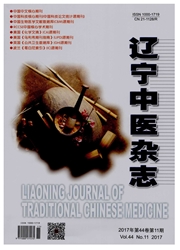

 中文摘要:
中文摘要:
目的:运用基因高通量测序技术,研究补肾中药二至天癸颗粒治疗肾虚不孕患者,与安慰剂组比较用药后患者卵巢颗粒细胞基因表达的差异,研究补肾中药二至天癸颗粒对肾虚不孕患者卵巢颗粒细胞基因表达的影响,在基因水平上探讨二至天癸颗粒对肾虚不孕患者产生疗效的作用机制。方法:1选取临床上接受IVF-ET治疗的肾虚不孕患者66例,按照随机数字表法分成治疗组33例,对照组33例。2两组均在IVF治疗前两个周期及治疗当周期服用药物,治疗组服用二至天癸颗粒,对照组服用安慰剂颗粒;两组均采用目前IVF治疗中常规应用的控制性超排卵方案长方案,在取卵日收集废弃的卵巢颗粒细胞并提取RNA。运用基因高通量测序技术Hiseq 2000分析,比较治疗组与对照组的基因表达的差异。3结合bowtie2软件分析,并使用检索互联网生物学公共数据库提供的检索程序对差异表达基因进行分析,最后对差异表达基因进行GO注释,并利用KEGG作pathway析。结果:1治疗组与对照组患者的卵巢颗粒细胞存在表达差异基因,获得表达差异基因共422条(P〈0.05)。其中,治疗组较对照组表达水平上调(FC〉2)的有103条,表达水平下(FC〈0.5)的有319条。2将差异表达基因按功能分析进行大体分类,涉及细胞凋亡、生物合成等方面。结论:1基因高通量测序技术是研究中药对人体作用的一种理想的技术方法。2补肾中药可以影响肾虚不孕患者的基因表达,这为补肾中药改善生殖功能作用的机制提供基因水平上的理论依据。
 英文摘要:
英文摘要:
Objective : By high - throughput gene sequencing technology, to study traditional Chinese medicine of tonifying the kidney Erzhi Tiangui Granule in the treatment of infertility due to kidney deficiency patients. Compared with placebo medication in patients with ovarian granulosa cell gene expression differences, to study the effects of Erzhi Tiangui Granule on infertility due to kidney deficiency patients with ovarian granulosa eel1 gene expression and at the gene level to discuss the therapeutic effect and mechanism. Methods:(1)A total of 66 patients with kidney deficiency and infertility treated by IVF -ET were divided into treatment group 33 cases and control group 33 cases according to the random number table method. (2)The two groups took drugs prior to IVF treatment two cycles and during the cycle. The treatment group took Erzhi Tiangui Granules. Control group was given a placebo pellet ; two groups used at present IVF treatment routine application of controlled ovarian hyperstimulation scheme rectangular case, on the day of oocyte retrieval collect waste ovarian granulosa cell RNA and extract. Gene expression in the treatment group and control group was compared with the analysis of Hiseq 2000 by high throughput sequencing technology. (3)Combined with soft- ware bowtie2 analysis, and use the search Internet public biological databases provide retrieval procedure analysis of differentially expressed genes, the differentially expressed genes were GO annotations, and by KEGG pathway analysis. Results:(4)In the treat- ment group and control group ovarian granulosa cells in the expression had differentially expressed genes,422 genes were obtained ( P 〈 0.05 ). Among them, the level in treatment group was higher than the control group expression level ( FC 〉 0.5 ), there were 103 (FC 〈 2) there were 319. (2)Differential expression genes were classified according to functional analysis, which involved in cell apoptosis, biosynthesis and so on. Conclusion:(1)high t
 同期刊论文项目
同期刊论文项目
 同项目期刊论文
同项目期刊论文
 期刊信息
期刊信息
